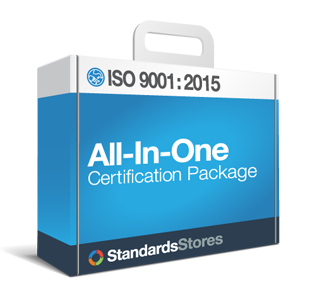ISO 9001:2015 Clause 9 Performance Evaluation
- Determine what, how, when and by whom results will be measured and evaluated
- Determine the methods for obtaining, monitoring and reviewing customer satisfaction
- Have an objective, planned and effectively implemented internal audit program
- Top management is to review the QMS at planned intervals
Clause 9 Performance Evaluation is broken down into 3 subclauses:
Clause 9.1: Monitoring, Measurement, Analysis and Evaluation
As noted elsewhere, the standard emphasizes both a process approach, and the need to utilize a review or checking phase (from the Plan>Do>Check>Act approach.) The standard mandates determining what data needs to be collected, how that data is collected and interpreted, and what results should be acted upon from a variety of inputs at various points in the quality management process.
These results must in turn be verified (audited), and they must be subject to management’s direct review. This process also must itself be evaluated for effectiveness.
Clause 9.1.2: Customer Satisfaction
ISO 9001:2015 standard states that organizations are required to meet both stated and intended needs of their customers. Data on the degree of customer satisfaction needs to be collected, analyzed and monitored to ensure customer expectations are being met. Data collection methods include surveys, direct customer communication, warranty activity and sales channel reports. The data collected can include measures around on time delivery, product/service quality, or order accuracy. The standard also wants the organization to identify and manage communication during the entire customer life cycle; this includes: how complaints will be addressed and solved and how customer perception and satisfaction will be monitored and improved.
- Learn more about Customer Satisfaction
Clause 9.1.3: Analysis and Evaluation
Data that reflects the performance of the QMS must be analyzed and evaluated to determine if improvements need to be made. Examples of data to monitor and measure include customer satisfaction, nonconformities, effectiveness of risk management and external provider performance.
In order to confirm that the QMS conforms to the ISO 9001:2015 standard and the organization’s standards internal audits must be conducted at planned intervals. A formal internal audit program needs to be established which defines the methods used, scope and frequency as well as assigning responsibility to objective and impartial auditors. The results of internal audits are used to make corrections and improvements to the QMS.
- Learn more about ISO 9001 Internal Audit
Data collected on QMS performance (i.e. customer input, internal audits, key quality performance indicators) and determination of any support, changes, or improvements must be reviewed and discussed by top management at planned intervals. Actions generated from the review must be recorded and implemented as they will be follow-up on during the next management review.
- Learn more about Effective Management Reviews
Please note that certain text from the ISO 9001 standard is only used for instructional purposes. Standard Stores recognizes and respects the International Organization for Standardization (ISO) copyright and intellectual property guidelines.


